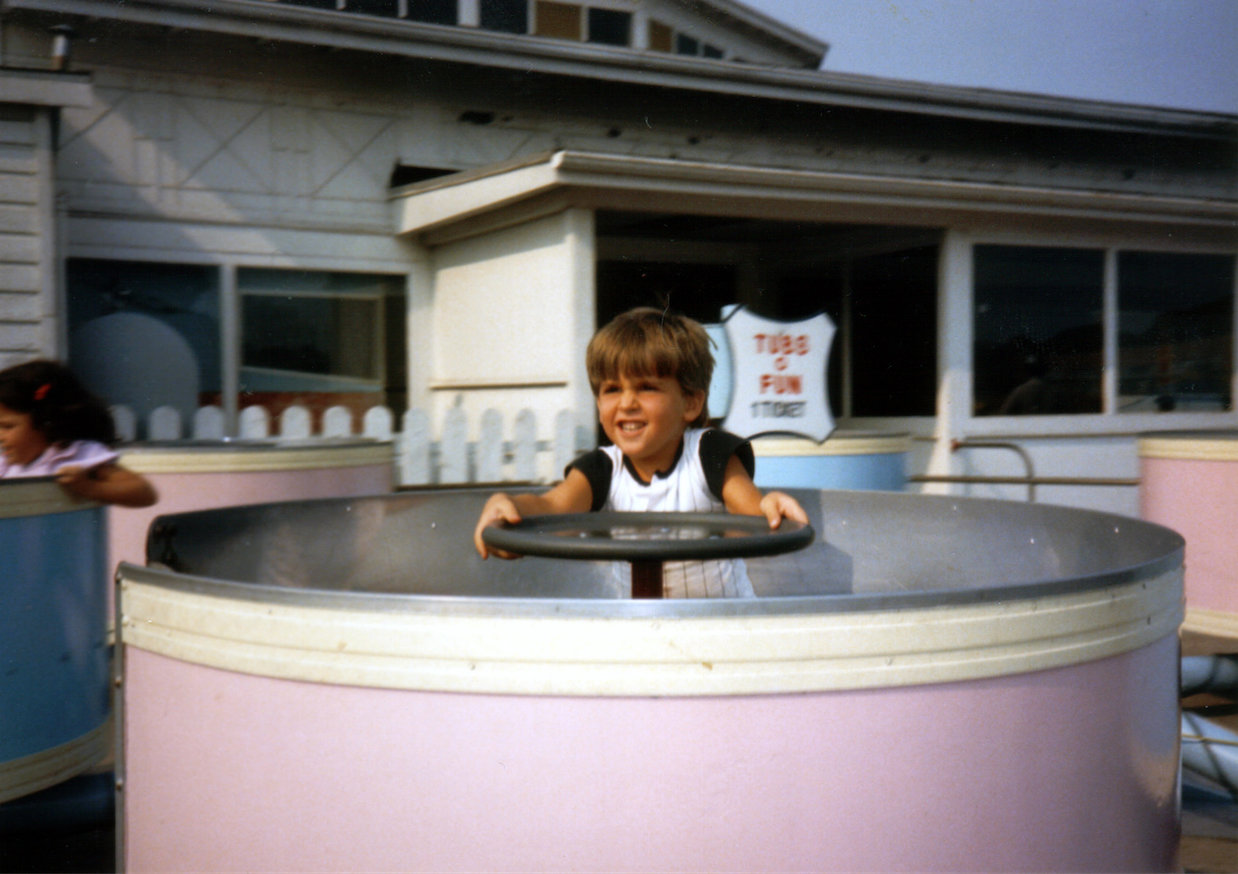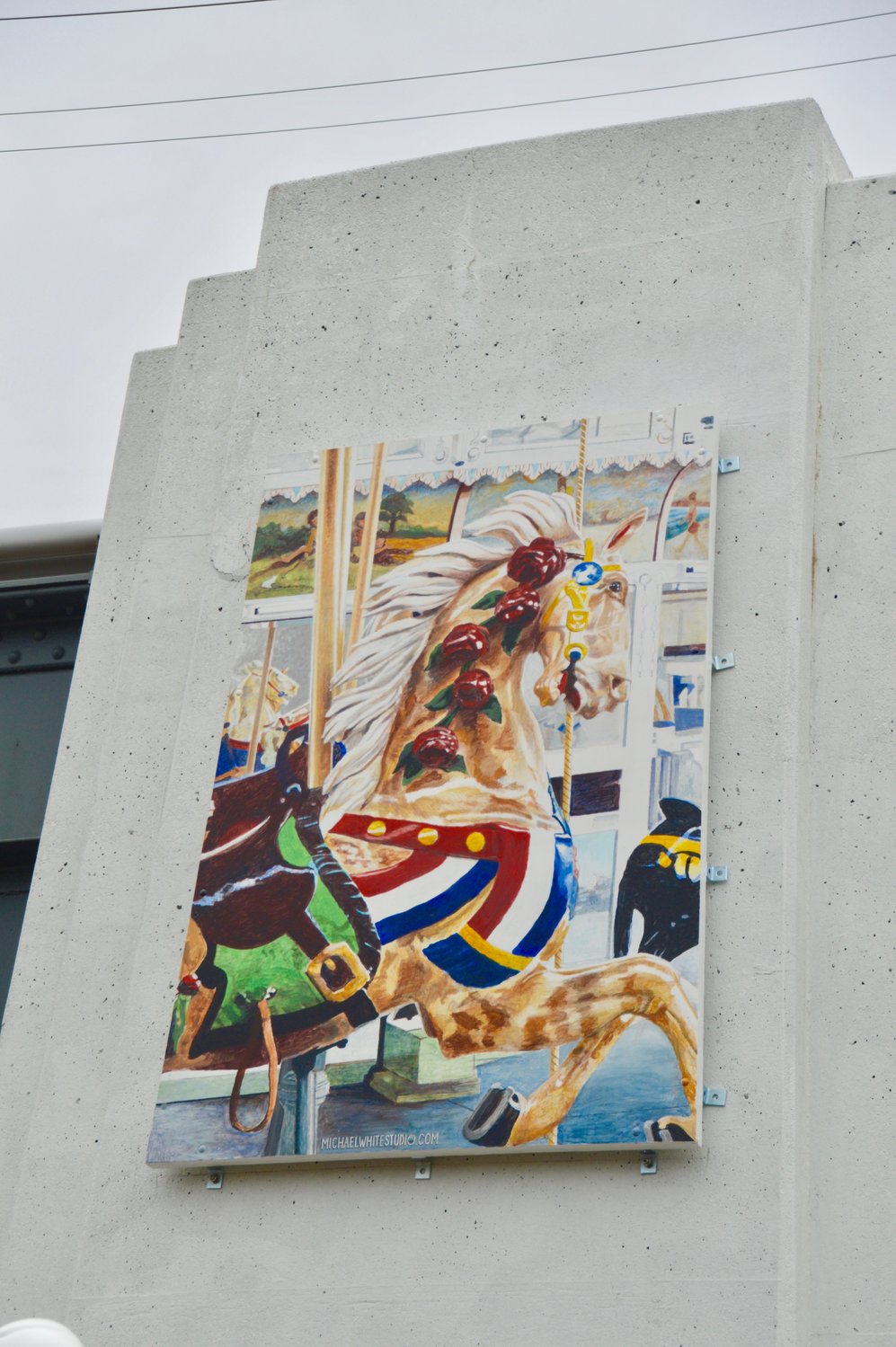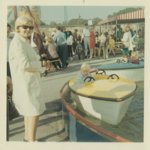Rockville Centre residents remember Nunley’s amusement park after unveiling of carousel mural

A mural mounted at the Baldwin Long Island Rail Road station on April 22 celebrated Nunley’s Carousel, a heralded destination for countless Rockville Centre families for more than five decades.
“We’d bring our quarters and whatever money we had and go on the rides,” said Rockville Centre Deputy Mayor Kathy Baxley. “The carousel was absolutely the favorite.”
As a middle-schooler in the 1970s, Baxley, who grew up near Hewitt Elementary School, recalled riding her bike to Nunley’s with a bunch of neighborhood friends. “We had to cross Sunrise Highway,” she said. “Can you believe our parents used to let us do it?”
The carousel was created in 1912 by the Brooklyn-based Stein and Goldstein Artistic Carousel Company, and operated for 26 years in Canarsie’s Golden City Park, where it was known as Murphy’s Carousel, according to the Cradle of Aviation Museum’s website. It reopened as Nunley’s Carousel in Baldwin in 1940, and was a popular attraction to South Shore residents for more than 50 years, before closing in 1995. The land was sold to Pep Boys, an automobile parts retail store.
Nassau County purchased the carousel, and it was stored in a hangar at Mitchel Field. For years, officials tried to bring it back to Baldwin, but those plans never came to fruition. Billy Joel wrote a song dedicated to the ride called “Waltz #1 (Nunley’s Carousel),” and unsuccessfully tried to move it to a park in Oyster Bay, where he lives. An Ohio-based company began restoring the carousel in 2007, and it was opened on Museum Row, adjacent to the Cradle of Aviation in Garden City, in 2009.
Rockville Centre business owner Lisa Umansky, 56, who grew up in Hewlett, said she went there often as a little girl, always asking to go to the carousel for her birthday in July. While driving on Sunrise Highway, she recalled, it became common for her parents to distract her as they were passing Nunley’s, telling her, “Lisa, look at that beautiful bird.”
“They knew if I saw [Nunley’s] I would just go ballistic from the back seat,” Umansky said. “It was the family joke . . . so they could pass without me giving them a hard time about me going.”
The mural, painted by Baldwin native Michael White and put up for display at the Baldwin LIRR station last month, brought the carousel’s memory closer to home.
But for some, the carousel was not the main draw. Michael Clancy, 39, of Rockville Centre, recalled some of the amusement park’s other rides, like the roller coaster, the classic cars, a spinning attraction and the train-like contraptions on a track that a rider could propel with his or her arms and even bump the one in front of them.
“It was just a place to go,” Clancy said. “For me, I remember the carousel was boring. It was the other rides that were more fun.”
Clancy’s father, Kerry, said he went to Nunley’s from the 1960s to when it closed. “As a father, I took my kids,” he said. “And my father took me.” Spending part of his childhood in Brooklyn, Kerry recalled that Coney Island was overwhelming. His family later moved to Rockville Centre, and would frequent Nunley’s.
“Going to Nunley’s as a little kid you weren’t intimidated,” he said. “The roller coaster was the right size. The carousel was perfect. Everything was just set up for kids and families. It was great.”
Now a grandfather, Kerry added, he is disappointed that Nunley’s, along with other fun gathering spots, like the stock car races in Freeport, are no longer available to families.
“We lost these community things to do,” he said, “and I still feel it.”
Anthony O’Reilly contributed to this story.









